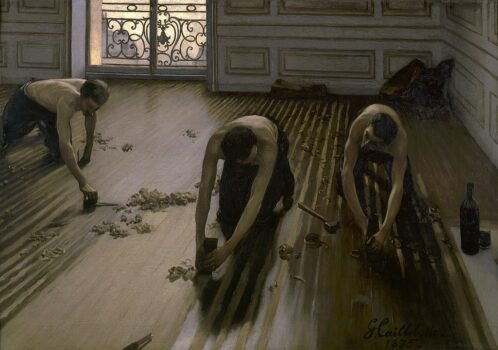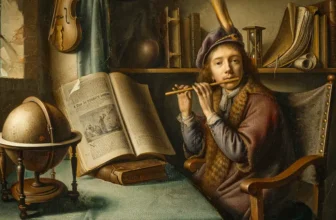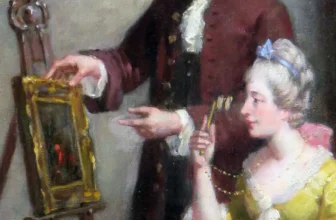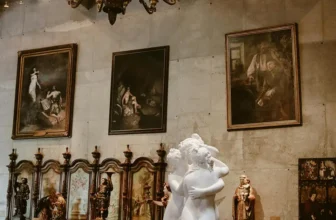Exploration of The Floor Scrapers by Gustave Caillebotte
Shopping Ads: Antique Oil Paintings On Canvas For Sale. Limited Originals Available 💰😊
Authentic hidden masterpieces, Explore old master antique oil paintings from the Renaissance and Baroque eras. From 15th-century to 18th-century Antique Paintings. Bring the Renaissance and Baroque in your home. Shop Now!
🎨 Antique Oil Paintings On Canvas Renaissance, Baroque Art Antique Oil Paintings, Make Offer 16th to 18th Century Portrait Paintings
In the vibrant and transformative world of 19th-century French art, where the hustle of modernity clashed with the traditions of classicism, Gustave Caillebotte emerged as a unique voice, poised delicately between realism and Impressionism. One of his most striking and iconic works, The Floor Scrapers (Les Raboteurs de parquet), painted in 1875, remains a profoundly evocative study of labor, light, and life. At first glance, the painting may seem simple: three men working diligently to scrape the floorboards of a grand Parisian apartment. But behind this seemingly mundane scene lies a rich tapestry of symbolism, artistic intention, and cultural commentary that places The Floor Scrapers among the masterpieces of 19th-century European painting.
What Is The Floor Scrapers All About?
At its surface, The Floor Scrapers presents a slice-of-life moment: three workers, shirtless, strong, and focused, scraping varnish from a hardwood floor. They are surrounded by the natural light pouring in through tall French windows, which casts a golden gleam on the polished surfaces. The figures are placed in various positions: one kneels toward the background, another bends deeply over his work, and a third crouches near the foreground. Their postures are contorted yet purposeful, revealing the physical toll and exacting precision required by their labor.
But this is no ordinary depiction of manual labor. Caillebotte elevates the scene into something close to the sublime. He gives us a study of movement and light, of strength and harmony. He turns the act of scraping a floor into a form of visual poetry.
The Artist and His Vision
To understand this painting fully, we must consider the artist behind it. Gustave Caillebotte (1848–1894) was a French painter, a wealthy man by birth, and an avid supporter of the Impressionist movement. Though trained in the academic tradition, he was drawn to realism and deeply influenced by contemporaries such as Edgar Degas and Édouard Manet. He often painted scenes of modern Parisian life: bridges, boulevards, rainy streets, and, in this case, the interiors of the elegant Haussmann-era apartments being renovated or maintained.
Caillebotte painted The Floor Scrapers when he was only 27 years old. It was one of his earliest major works and was initially rejected by the Salon of 1875, partly because of its subject matter. The nudity of the working men (not heroic figures, but laborers) was deemed vulgar. Yet, the work was later exhibited in the Impressionist exhibitions of 1876 and has since become a cornerstone of his legacy.
Symbolism and Interpretation
Though on its surface The Floor Scrapers appears to be a straightforward depiction of a domestic scene, the painting is rich with layers of meaning. Let’s delve into its deeper symbolism and thematic undertones.
1. Dignity in Labor
One of the most compelling themes in The Floor Scrapers is the dignity and beauty of physical labor. At a time when artists mostly reserved large-scale, detailed canvases for mythological, historical, or aristocratic subjects, Caillebotte dared to portray blue-collar workers with the same care and grandeur. He shows their muscular physiques in action, the sweat glistening on their backs, the concentration on their faces, making them almost statuesque in their intensity.
This humanistic approach challenges the class boundaries of the time. Rather than romanticize the labor, he presents it truthfully, but respectfully. It reflects a growing recognition of the working class in post-Haussmann Paris, a city that was physically transformed by the same kind of labor Caillebotte honors here.
2. Modernity and Renovation
The act of floor scraping has symbolic weight in a city that had just undergone massive urban renewal. Baron Haussmann’s renovations of Paris in the mid-19th century gave rise to the wide boulevards, new apartments, and airy interiors that defined modern Parisian life. Caillebotte, by portraying workers refinishing the floors of such a space, alludes to this larger context: the renewal of the city, the transformation of private and public life, and the price of progress.
The large windows and the clean, elegant moldings in the room suggest a newly gentrified space, and the workers’ presence becomes a metaphor for the invisible forces behind this modernization.
3. Light as a Metaphor
Light in The Floor Scrapers plays a critical symbolic role. The filtered sunlight streaming through the windows creates elongated reflections on the polished floor, casting the men in luminous, golden tones. This not only adds to the aesthetic beauty of the work but also reinforces the idea that labor, when illuminated by the artist’s eye, becomes art. The use of light also serves to blur the line between the interior and exterior, perhaps suggesting the fluidity between private effort and public change.
4. Masculinity and Eroticism
Some art historians have also noted the sensual overtones in the painting. The bare backs, strong torsos, and vulnerable postures of the workers bring an undercurrent of eroticism into the scene. Whether intentional or not, Caillebotte’s gaze lingers on their form and effort in a way that invites the viewer to consider the physicality of the male body, not in a mythological or militaristic context, but within domestic labor. This subtly challenges prevailing gender norms and adds complexity to our reading of the piece.
5. Silence and Concentration
There’s a profound stillness in the painting. The viewer can almost hear the scraping of the metal tools against the wood. This silence, combined with the harmony of movement and space, creates a meditative atmosphere. It’s as if the artist invites us to slow down, observe, and appreciate the quiet nobility of hard work. In this sense, the painting becomes not just a visual experience but a philosophical one.
What Kind of Art Is The Floor Scrapers?
The Floor Scrapers is a hybrid of styles, which makes it especially interesting in the history of art.
1. Realism
Caillebotte was influenced by the Realists, particularly Gustave Courbet and Jean-François Millet, who depicted everyday subjects and working-class individuals with gravity and seriousness. Like them, Caillebotte’s attention to detail, the textures of the floor, the muscles of the workers, the soft interplay of light and shadow, is grounded in a realist ethos.
2. Impressionism
Although not strictly an Impressionist in technique, Caillebotte’s affinity with the movement is clear. His use of natural light, informal composition, and interest in modern life align him with his peers. The delicate treatment of light on the floorboards, the suggestion of motion, and the atmospheric qualities of the room bring the work close to Impressionism.
3. Academic Influence
Unlike many Impressionists who abandoned academic conventions, Caillebotte retained a degree of structure and technical precision. His draftsmanship and linear perspective are more aligned with the academic style, suggesting his formal training still influenced his compositions.
Thus, The Floor Scrapers can be described as a realist painting with Impressionist influences, unique in its synthesis of tradition and modernity.
What Is Happening in The Floor Scrapers?
In terms of literal action, the painting shows a moment of intense manual labor. Three men, likely professional floor refinishers, are scraping off old varnish to prepare the wooden floor for a new finish. Their tools are specialized, their movements synchronized yet individual. One works with his back to us, another leans far forward, and the third, in the middle, crouches at an angle.
The surrounding apartment is spacious and bright, with moldings on the walls and tall windows that suggest upper-middle-class or bourgeois habitation. The air seems filled with the dust of renovation. We are witnessing a transitional moment: a home being prepared, a floor reborn, a space on the cusp of change. This act of renewal is both physical and symbolic.
Where Is The Floor Scrapers Painting Located Today?
Today, The Floor Scrapers resides in the Musée d’Orsay in Paris, one of the most prestigious museums for 19th-century art. The museum, housed in a former railway station, contains the world’s largest collection of Impressionist and post-Impressionist masterpieces. The painting is part of the museum’s permanent collection and is displayed alongside works by Monet, Renoir, Degas, and Van Gogh.
Its presence in the Musée d’Orsay marks a kind of poetic justice: once rejected by the Salon for its vulgarity, it is now celebrated as a masterwork of French art, a testament to the enduring power of honesty in art.
Why The Floor Scrapers Still Matters
More than a century after it was painted, The Floor Scrapers continues to resonate with modern audiences. It speaks to the dignity of work, the beauty in the ordinary, and the interplay between progress and tradition. In Caillebotte’s hands, the scraped floor becomes a mirror of modern life, refined, raw, unfinished, and luminous.
Its enduring appeal lies not only in its technique but in its humanity. Caillebotte invites us to see the world not from the viewpoint of emperors or angels, but from the floor itself, scraped, worn, and waiting to shine.




